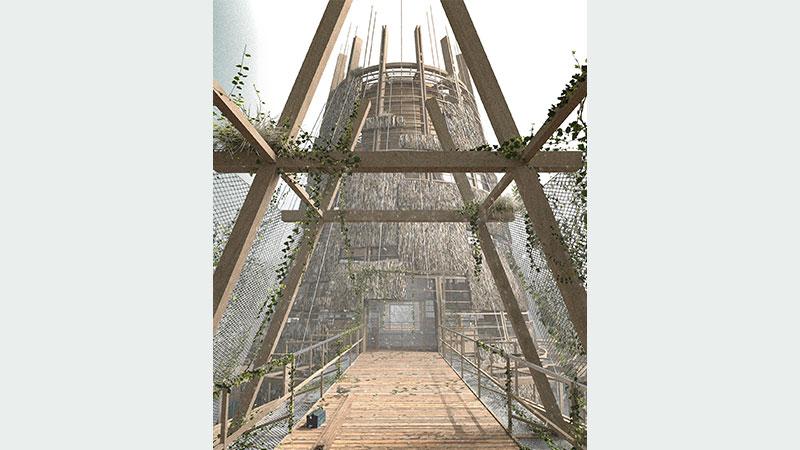Architecture BA Honours graduate, Kacper Sehnke, is among ten students to be shortlisted for the Architect Journal (AJ) Student Prize Sustainability Award 2023 for his design that brings humans and nature together.

The AJ Student Prize aims to celebrate and highlight the strength and talent among students graduating from undergraduate and postgraduate architecture courses this year.
Kacper’s project, titled Council for Ecological Restoration, blurs the boundary between the built and natural worlds by integrating them into one. The building's design intentionally encourages overgrowth over its lifespan, ultimately transforming it into a habitat for non-human entities, while maintaining indoor spaces for human occupants. The building's façade serves as a transitional zone, fostering coexistence between humans and non-humans, encouraging them to share the same space.
The building also encourages political discussion and ecological research, as its main goal is to help restore nature and local ecology. Among its many sustainable features, the construction uses recycled timber, so as time goes on, the building materials can be returned back to nature, aiding nutrient cycles and helping the natural world around it thrive.
Speaking about the project, Kacper said: “The project idea mostly began with a book I read as part of the studio brief titled Half-Earth Socialism. It touches upon the concept of legality within the natural world and emphasises the need to embrace a biocentric perspective to ensure its preservation. From there, the project brief transformed into a large-scale initiative, drawing inspiration from the United Nations Decade for Restoration. It envisions the protection and regeneration of ecosystems through political deliberation and global collaboration at multiple scales.”
The project shares a balance between theoretical concepts and practical feasibility, as it can realistically be constructed. During the design process, Kacper looked at a lot of existing buildings and their functionality to ensure that his design would work. He envisioned it as a blueprint that could be easily implemented and deconstructed when needed, with minimal carbon footprint.
Speaking about the creative process he said: “When it comes to the whole creative process of my project from start to finish, the first few weeks were probably the hardest. I had to make decisions quickly regarding either the brief or the design in order to not fall behind. Once I had a sense of direction in terms of what I wanted to design and how I envisioned it, it got easier especially with feedback.”
Commenting on Kacper’s achievement, Dr Eric Guibert, Senior Lecturer of Architecture and Kacper's former tutor, said: “This project is a remarkable and beautiful investigation in regenerative architecture. It embodies the principles of circularity through re-use of material from buildings demolished nearby and the harvesting of wood in the landscape. The concept increases the amount and range of habitats by both cracking the existing hard surfaces for ecological processes to restart and the refined and deep facade system designed to host plants and animals.”
Find more about the School of Architecture and Cities.







